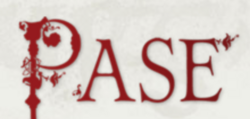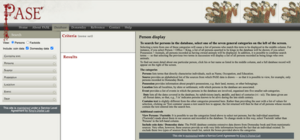Prosopography of Anglo-Saxon England facts for kids

The logo of the PASE website
|
|
| Available in | English |
|---|---|
The Prosopography of Anglo-Saxon England (PASE) is a special online database. It's like a huge collection of information about people who lived in Anglo-Saxon England. This time period was from the year 597 to 1087. PASE gathers details, called 'factoids,' about everyone recorded from that time. It even shows where the information came from, like old books or documents.
Contents
About the PASE Project
The PASE project started as a big research effort. It received money from the British Arts and Humanities Research Council. This funding lasted from 2000 to 2008. The project was based at King's College London and the Department of Anglo-Saxon, Norse and Celtic, University of Cambridge. Today, the University of Oxford hosts the database online.
PASE1: Early Anglo-Saxon Records
The first part of the project, called PASE1, launched in May 2005. It focused on people mentioned in written records up to the year 1066. This part of the database includes 11,758 different individuals. Each person has a unique number, like Alfred the Great, who is known as Alfred 8. You can find different spellings of their names. It also lists facts about their jobs and family connections.
PASE2: Domesday Book Information
The second part, PASE2, was released in August 2010. This update added information mainly from the Domesday Book. The Domesday Book was a huge survey of England made in 1086. PASE2 added 19,807 more people to the database. It shows maps of the land these people owned. It also provides short life stories for some individuals.
Publications from PASE
The creation of the PASE database led to many books and articles. These publications share the discoveries made during the project. You can find a list of these works on the PASE website.
Project Leaders
These are some of the main people who led the PASE project:
- Dame Janet 'Jinty' Nelson
- Simon Keynes
- Harold Short
- Stephen Baxter
See also
- Anglo-Saxons
- Prosopography of the Byzantine World


